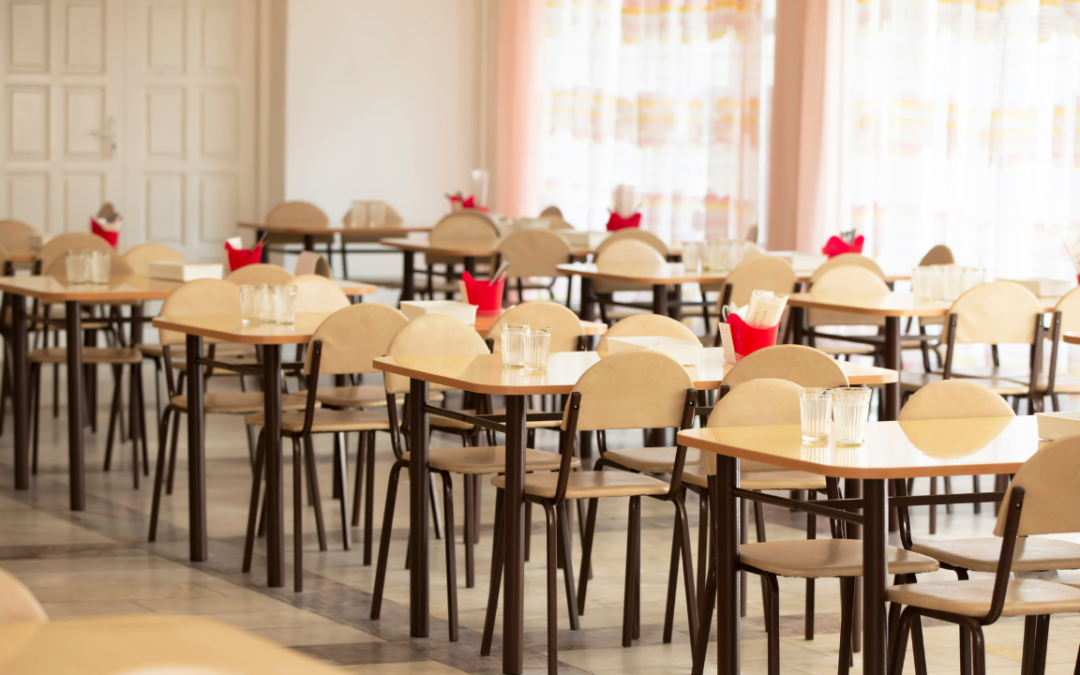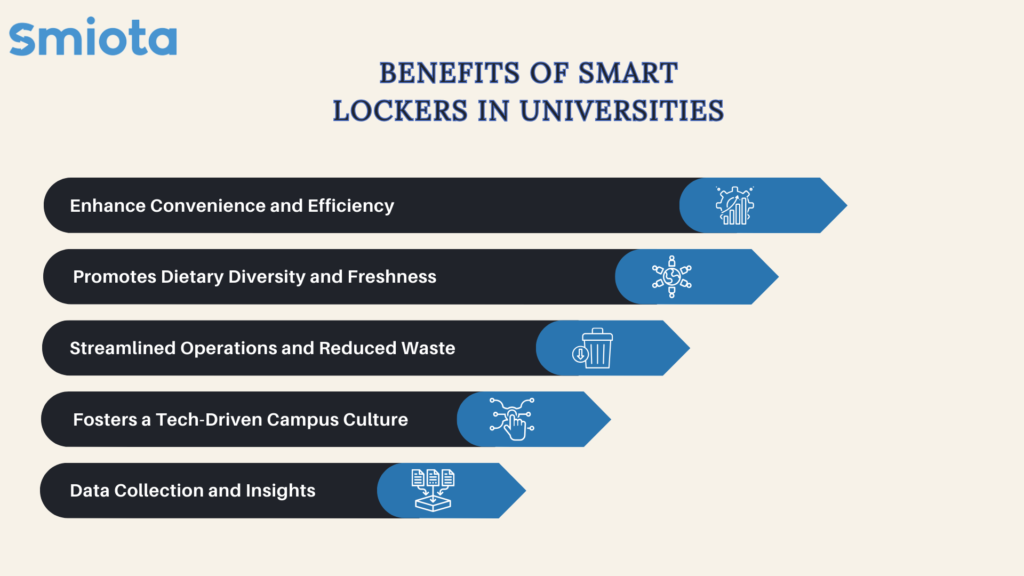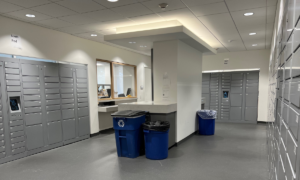Today’s students seek campus dining services that are efficient and personalized and fit seamlessly into their bustling schedules of classes, activities, and work. The old ways of long queues and missed meals due to time clashes are no longer viable. Universities are pushed to innovate beyond traditional models because dining significantly influences student well-being and success. Enter smart lockers: an essential solution for modernizing campus dining. These offer a streamlined, flexible system that meets students’ varied demands and tastes. This blog post explores campus dining challenges and showcases how smart lockers present a practical, beneficial response.
Challenges Usually Faced by Students in Campus Dining
Campus dining is a crucial aspect of university life, but it comes with challenges.
- Long queues and wait times are a common frustration for students, especially during peak dining hours. This often leads to wasted time that could be better utilized for studying or leisure activities.
- The limited hours of operation for dining facilities pose a problem for students with schedules that include evening classes or late-night study sessions, making it difficult to find open eateries when most needed.
- Traditional campus dining setups struggle to cater to the increasing demand for dietary diversity. Students today are looking for various dining options that include vegetarian, vegan, and allergen-free choices to accommodate their specific dietary needs.
- In the digital age, there’s a strong desire among students for convenience and on-demand services. They seek more flexible and efficient ways to access their meals without sacrificing quality or variety, highlighting a significant gap in the traditional campus dining experience.
As universities strive to address these dining challenges, one innovative solution has emerged: smart locker systems. These systems transform the campus dining experience by offering a seamless, efficient, and diverse dining option that aligns with the modern student’s lifestyle and preferences.
Introducing Smart Locker Systems: A Solution to Campus Dining Woes
To address the above challenges, universities are increasingly turning to smart locker systems, a novel solution that promises to redefine the campus dining landscape.
Key features of smart lockers
- 24/7 Access: Allows students and staff to pick up their orders at any time, accommodating varying schedules and late-night study sessions.
- Contactless Pickup: Minimizes the need for direct interaction, enhancing safety and convenience.
- Temperature-Controlled Options: Ensures food items remain at the appropriate temperature in refrigerated lockers until pickup, preserving freshness and quality.
- Customizable Solutions: Offers the ability to tailor the food locker setup to meet specific campus needs, including size, location, and aesthetic preferences.
- Secure Storage: Provides a safe environment for food orders until they are picked up, reducing the risk of theft or tampering.
- Automated Notifications: Sends alerts to recipients when their orders are ready for pickup, ensuring timely collection and customer satisfaction.
- Efficient Management: Streamlines campus food delivery and pickup, reducing congestion and wait times in dining areas.
- Sustainability: Reduces waste and energy consumption compared to traditional food delivery methods.
These features create a more efficient, safe, and pleasant dining experience on campus, leveraging technology to meet the evolving needs of university communities, offering numerous advantages.
Related: Food Lockers – The Future of Food Pickup and Delivery
Benefits of Implementing Smart Lockers in Universities
Smart lockers, integrated with digital ordering platforms, allow students to order food from campus eateries via a mobile app or website. Once the food is prepared, it’s securely placed in a temperature-controlled locker that can be accessed by the student at their convenience using a unique code or their student ID. Smart lockers can transform campus dining in the following ways:
Enhancing Convenience and Efficiency
Smart lockers revolutionize the pickup process by eliminating the need for queues, catering to the modern student’s demand for speed and efficiency in service.
These lockers extend dining service hours to accommodate every student’s schedule, offering round-the-clock access to food. This flexibility ensures students can grab a meal whenever their busy lives allow, be it for a late-night study session snack or an early morning breakfast, seamlessly fitting into the unpredictable rhythms of campus life.
Promoting Dietary Diversity and Freshness
Smart lockers maintain food at precise temperatures, preserving the freshness and safety of meals. This technological feature broadens the spectrum of dietary options available, from hot entrees to cold salads and perishable snacks.
These refrigerated lockers support a diverse menu that caters to various dietary needs and preferences, including vegan, vegetarian, and gluten-free options. This diversity enriches students’ dining experiences, offering them a more comprehensive meal selection that meets their dietary requirements.
Streamlining Operations and Reducing Waste
Universities benefit from smart lockers’ operational efficiencies, such as reduced staffing needs and minimized dining area space requirements. This efficiency cuts costs and supports a more streamlined food service operation.
By synchronizing order placements with pickup times, smart lockers significantly reduce food waste. Meals are prepared to order and securely stored until pickup, ensuring that food is fresh, and waste is minimized.
Fostering a Tech-Driven Campus Culture
Implementing smart lockers signals a shift towards a more technologically adept campus culture. This move aligns with the expectations of a digital-native student body that values and relies on technology for convenience in their daily lives.
By adopting such cutting-edge solutions, universities not only address the immediate needs of their students but also establish themselves as forward-looking institutions that embrace innovation and change, fostering a campus atmosphere that is both progressive and responsive to technological advancements.
Data Collection and Insights
The technology behind smart locker solutions captures essential data on meal preferences, peak pickup times, and user feedback. This data is instrumental in refining menu selections, adjusting operational hours, and enhancing overall service quality, making the dining experience more attuned to the needs of the modern campus population.
Smart lockers offer a forward-thinking solution to traditional campus dining challenges, enhancing the experience for all involved and setting a new standard for convenience, safety, and efficiency in food service. Undoubtedly, there’s more to smart lockers than the focus on university dining services.
Beyond Meals: Smart Lockers for Multi-Functionality
The versatility of smart lockers extends beyond dining services. They can also be used for:
- Library Book Pickups: Students can reserve and pick up library materials through smart lockers without stepping into the library.
- Textbook Distributions: Smart lockers can facilitate the distribution and return of textbooks, saving students time and hassle.
- Package Delivery: Students can securely receive online orders and packages via smart parcel lockers.
Conclusion
Smart locker systems are at the forefront of transforming the campus dining experience, offering a solution that marries convenience with efficiency, diversity, and sustainability. By addressing the common challenges students face, these systems not only enhance the quality of campus life but also reflect a broader trend toward integrating technology in educational settings. As universities seek ways to meet and exceed student expectations, the role of smart lockers will undoubtedly expand, further revolutionizing not just how students dine but how they engage with their campus environment as a whole, setting a new standard for future generations, where convenience and quality go hand in hand.





